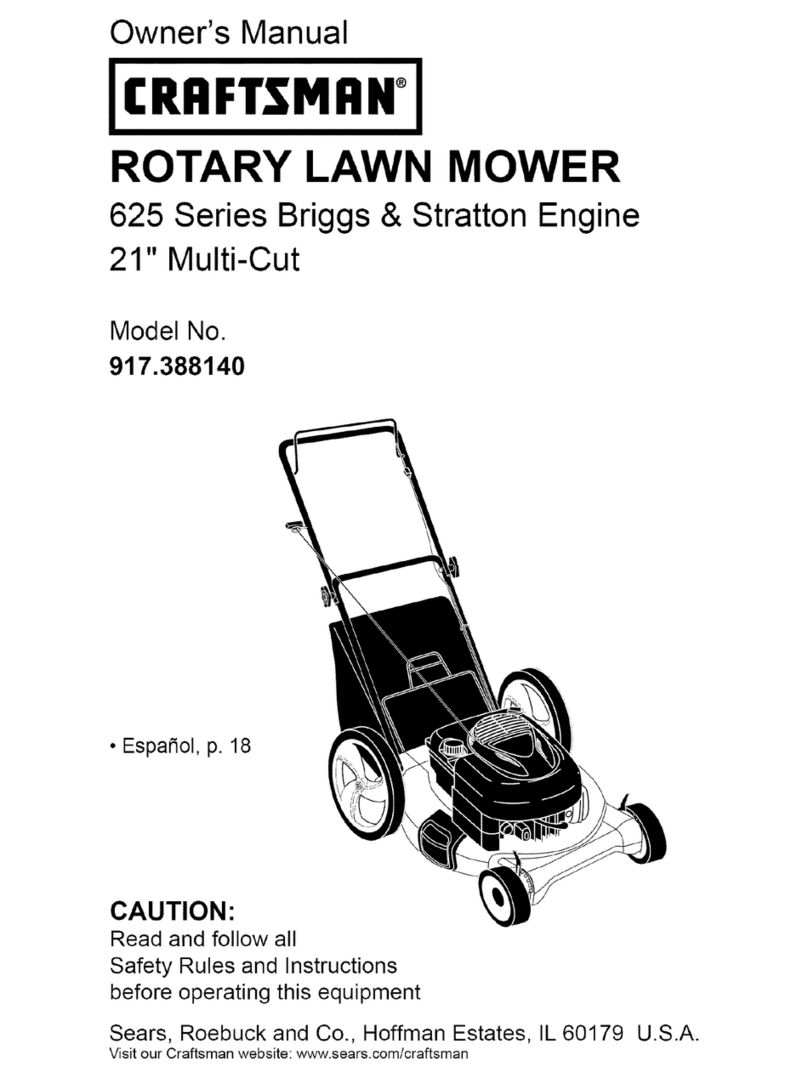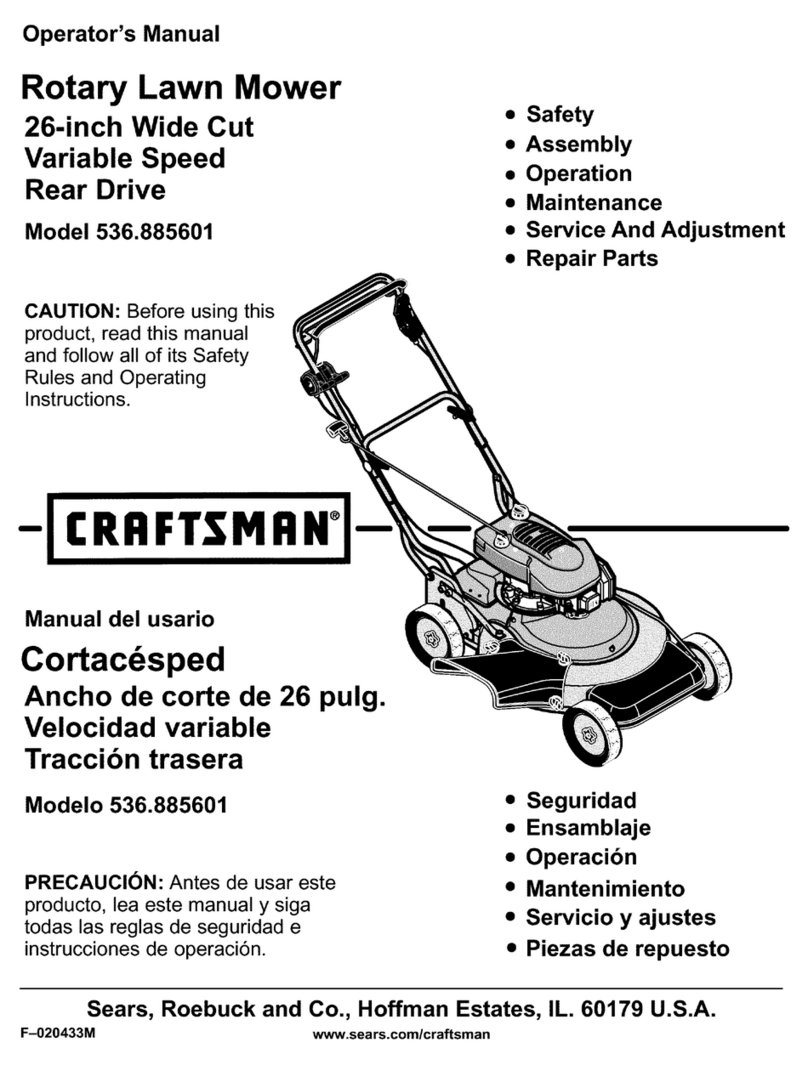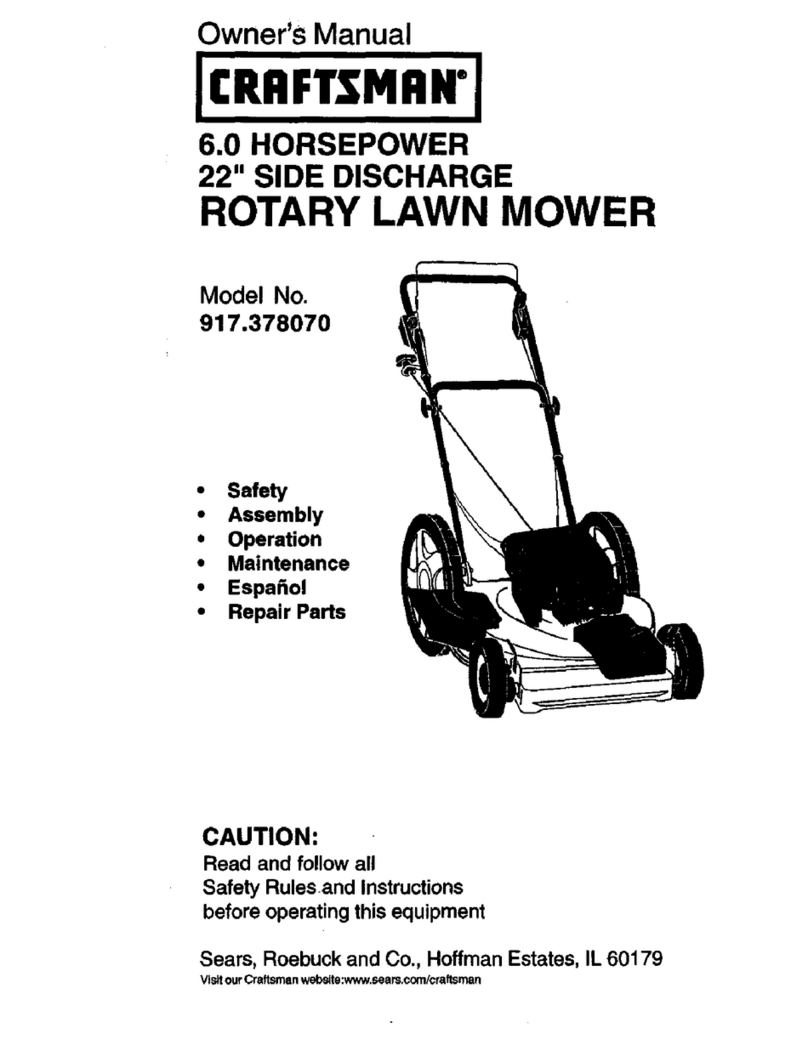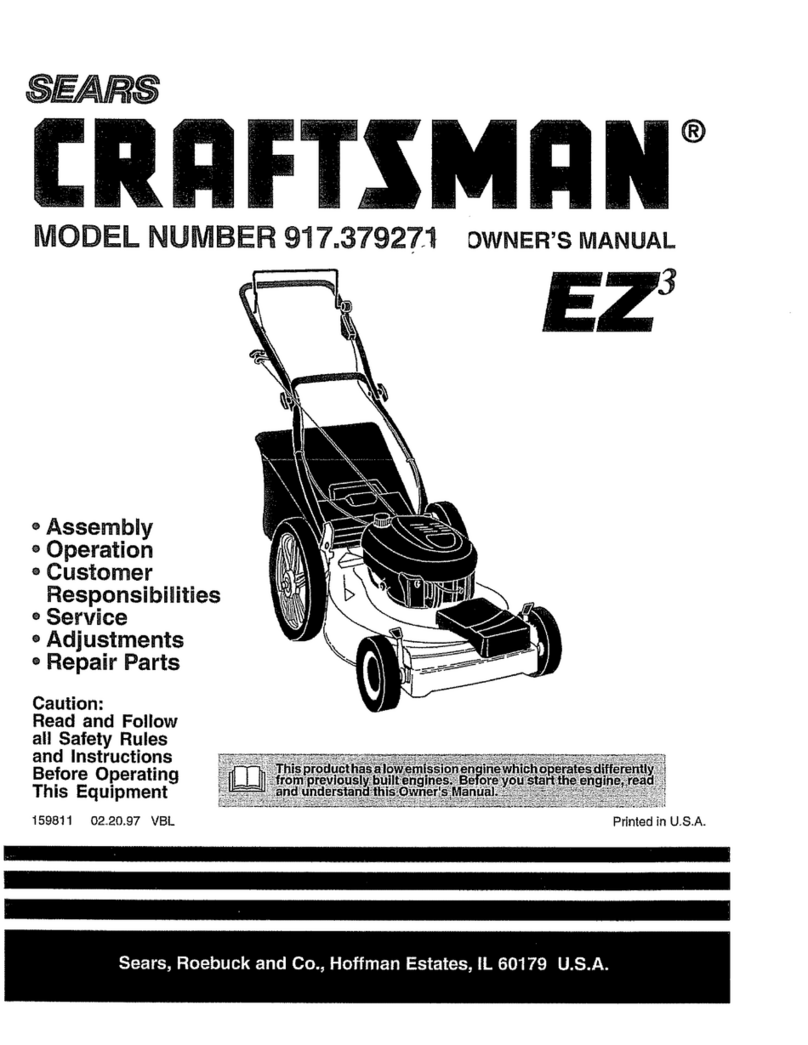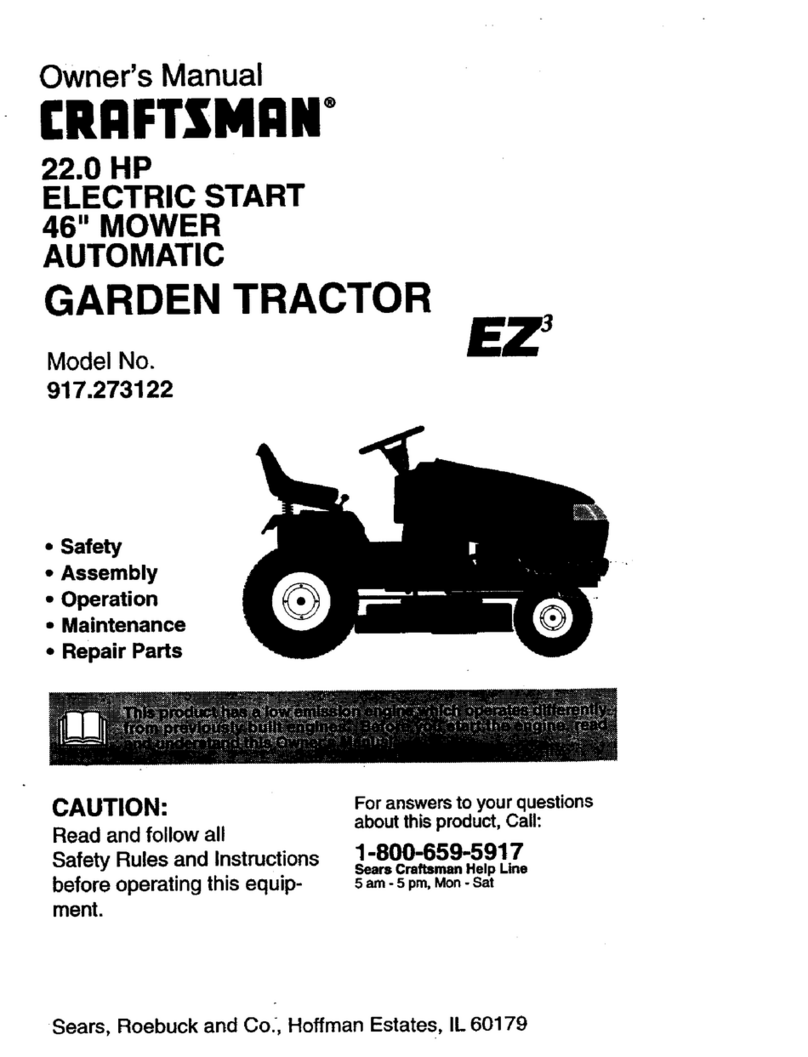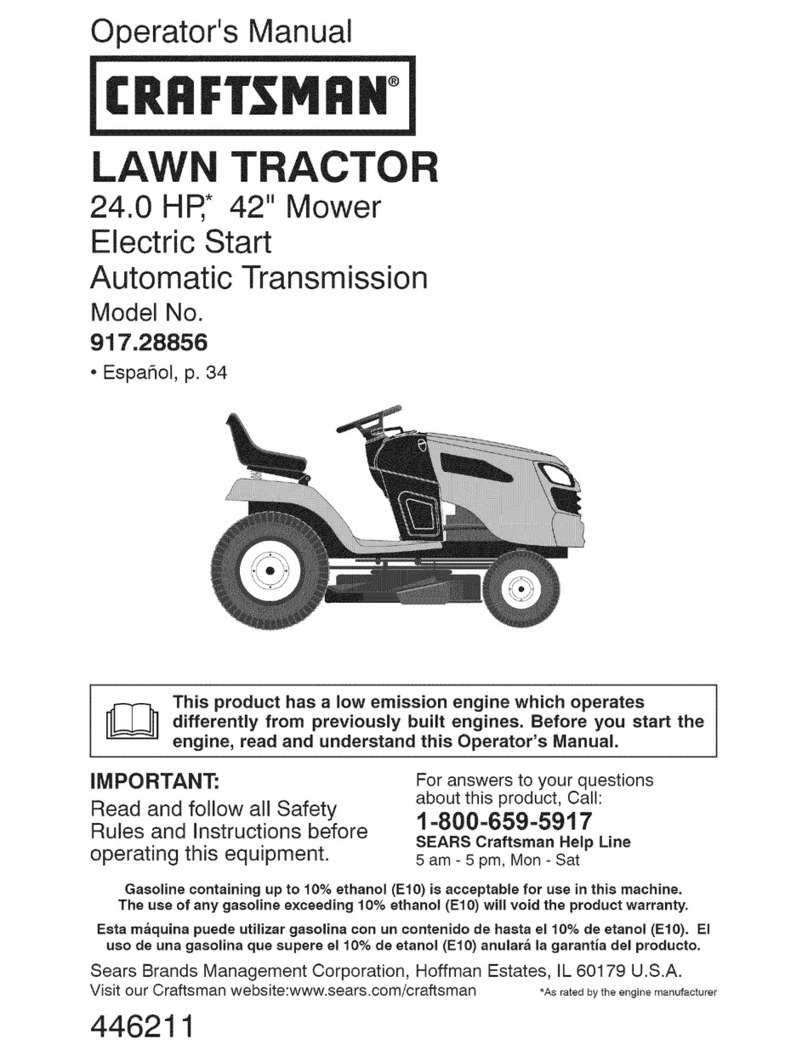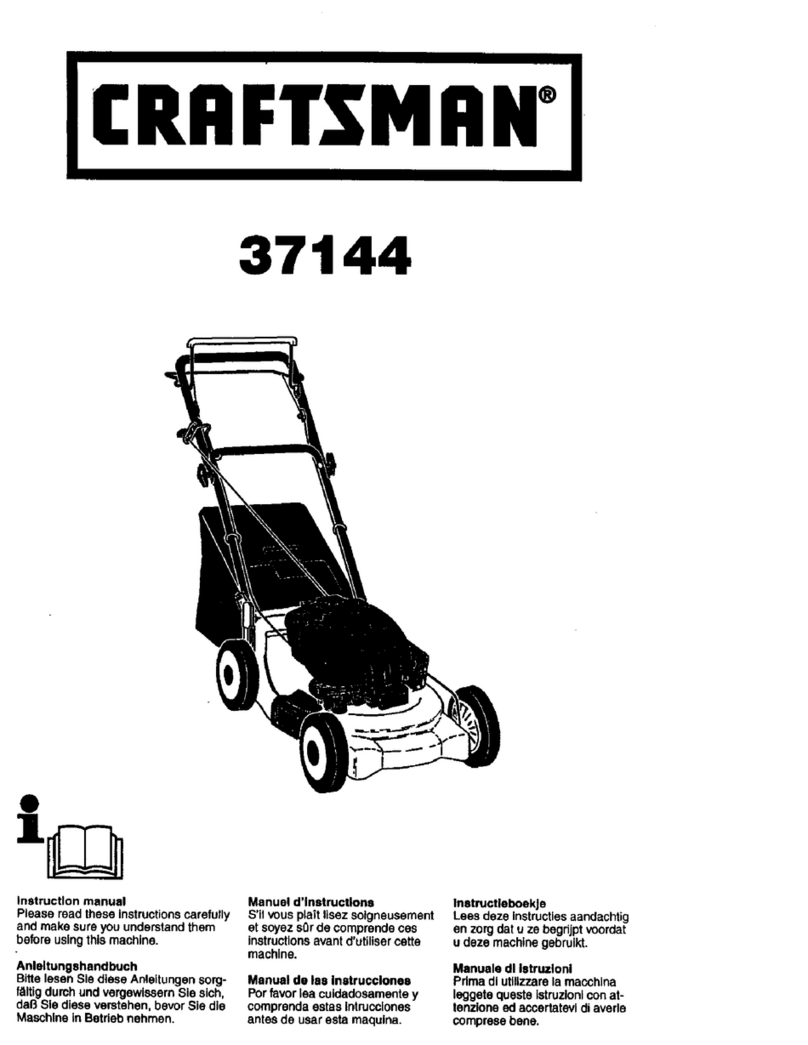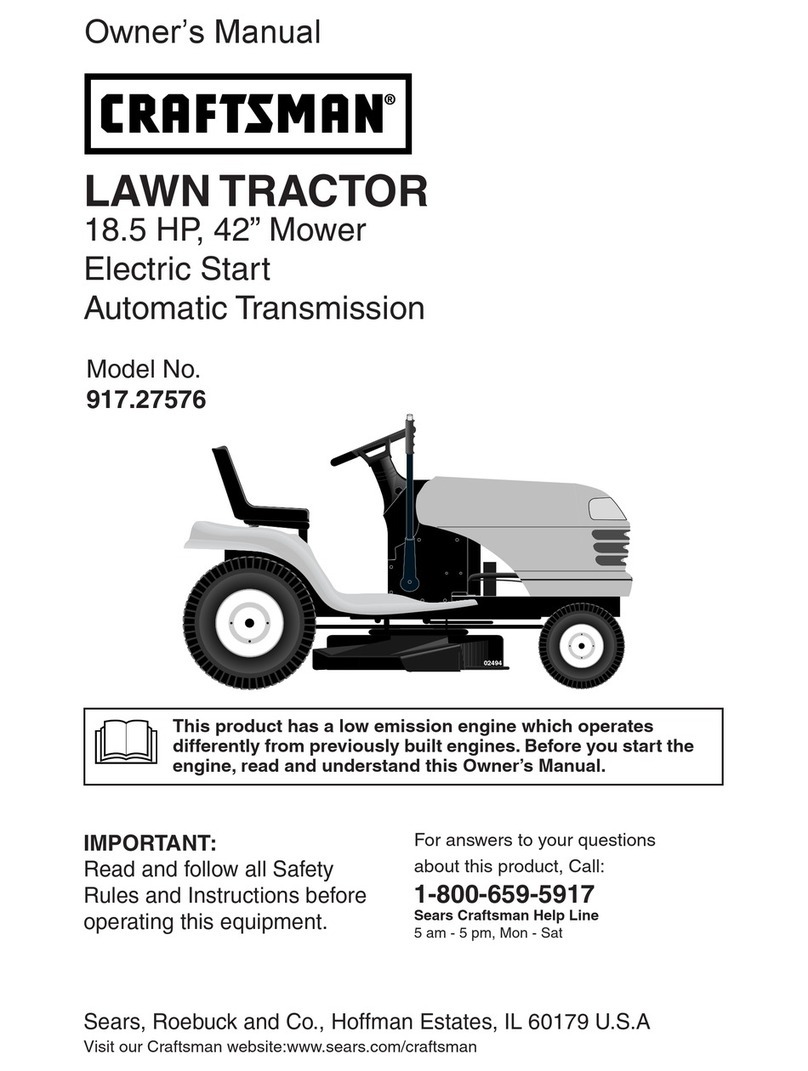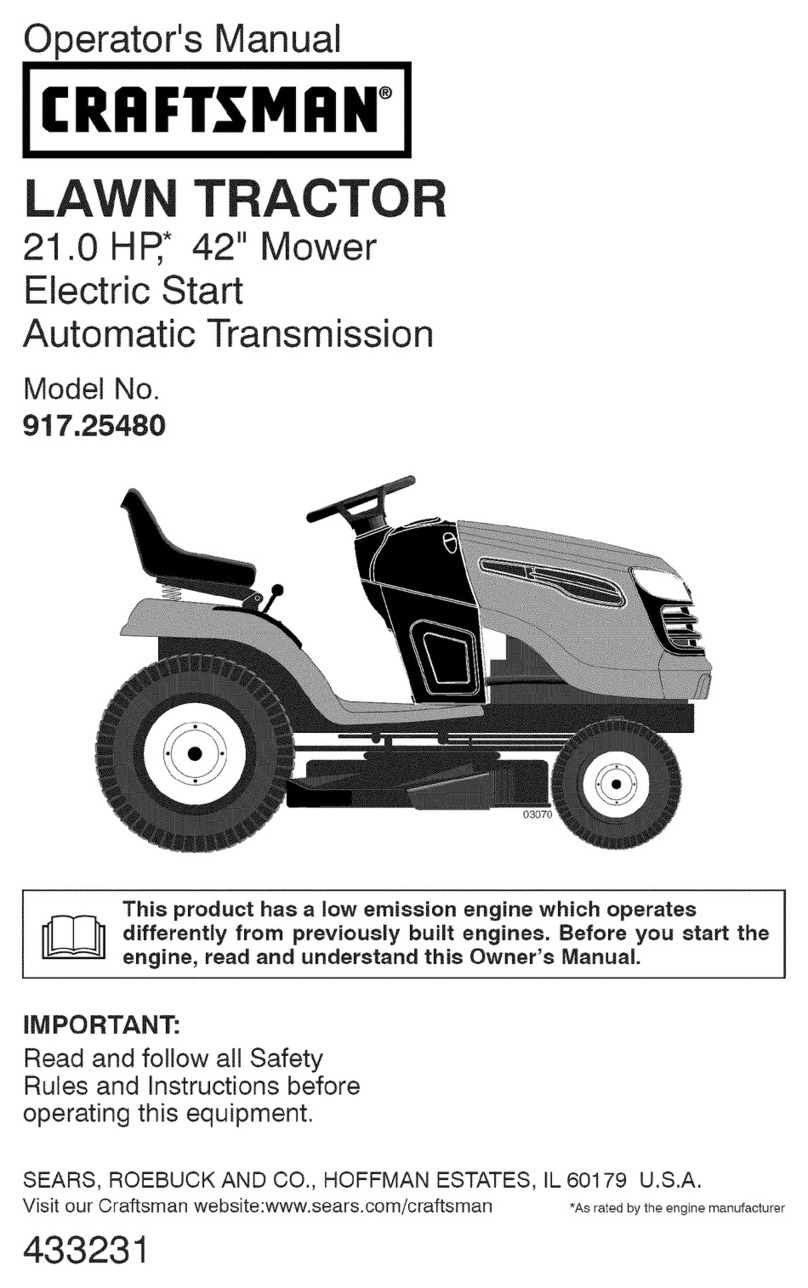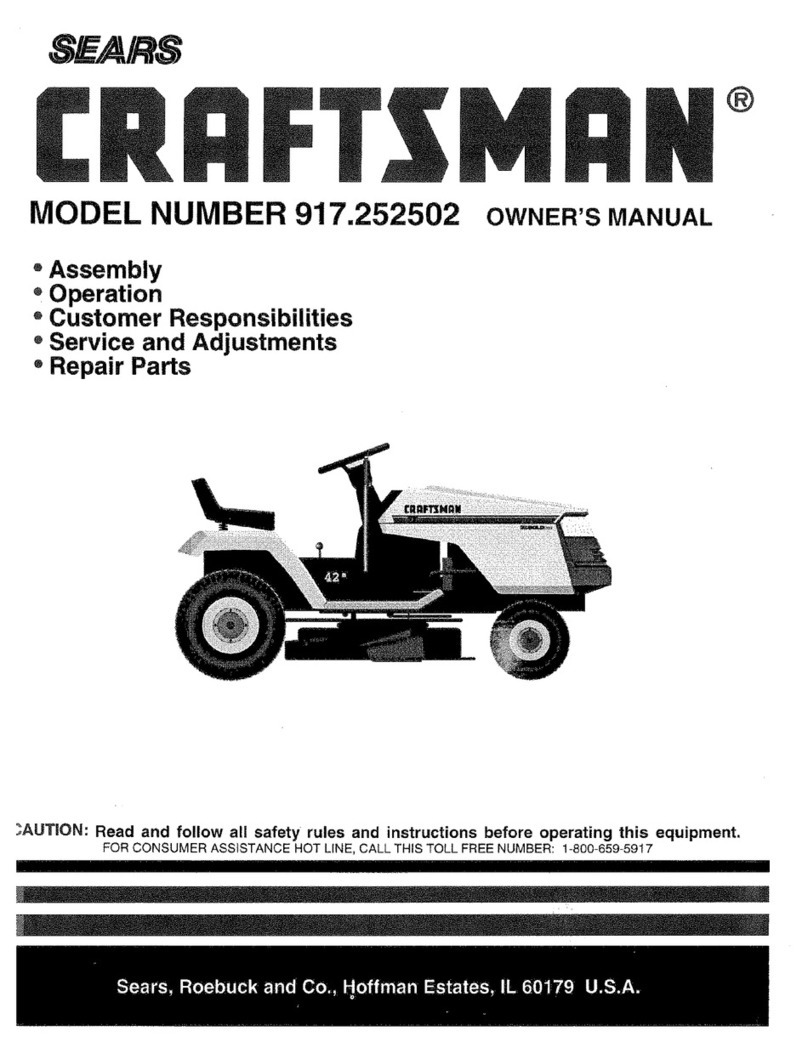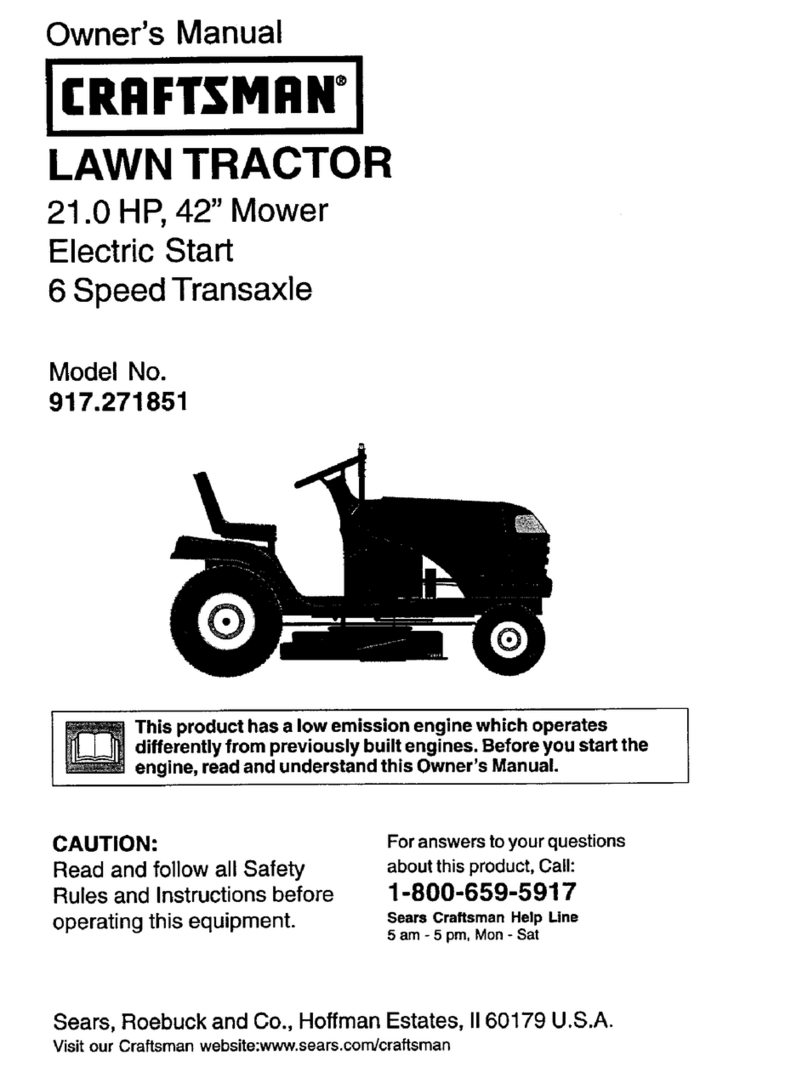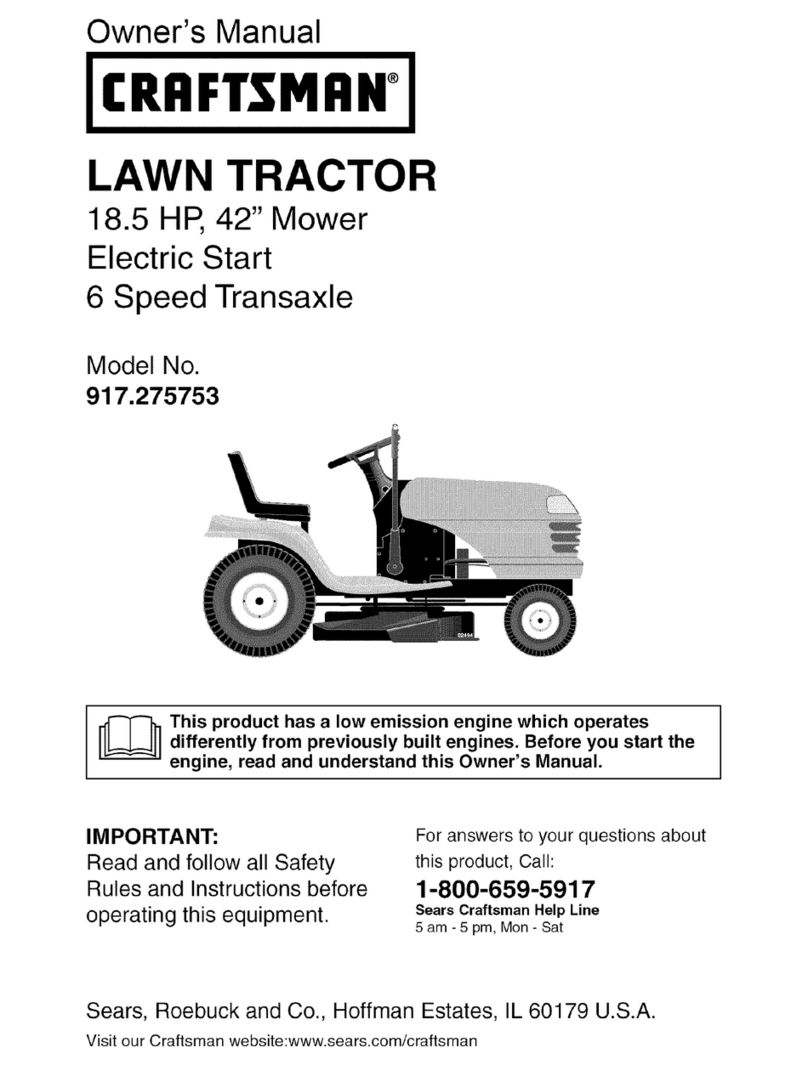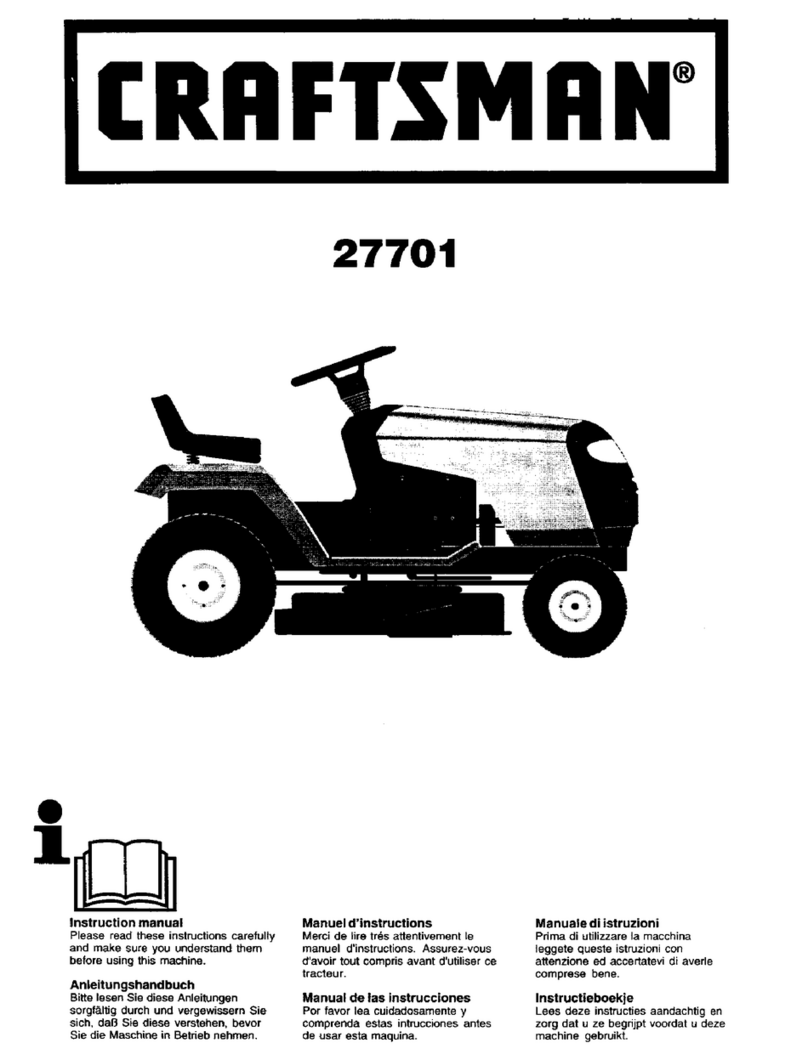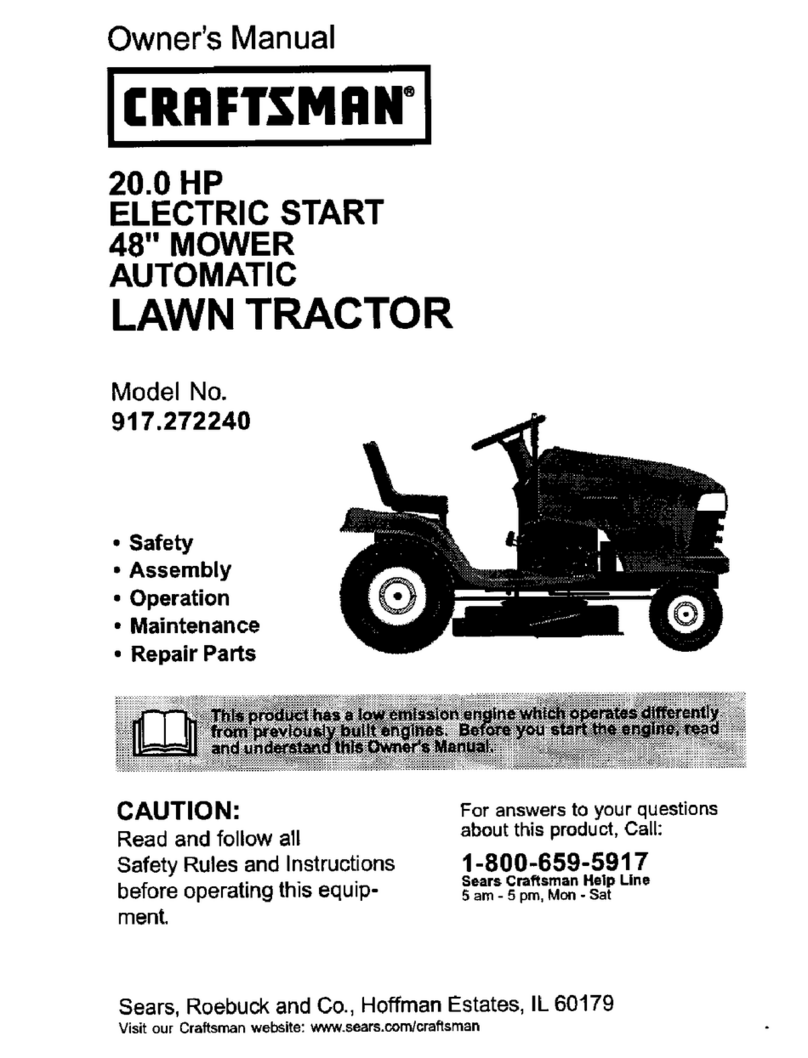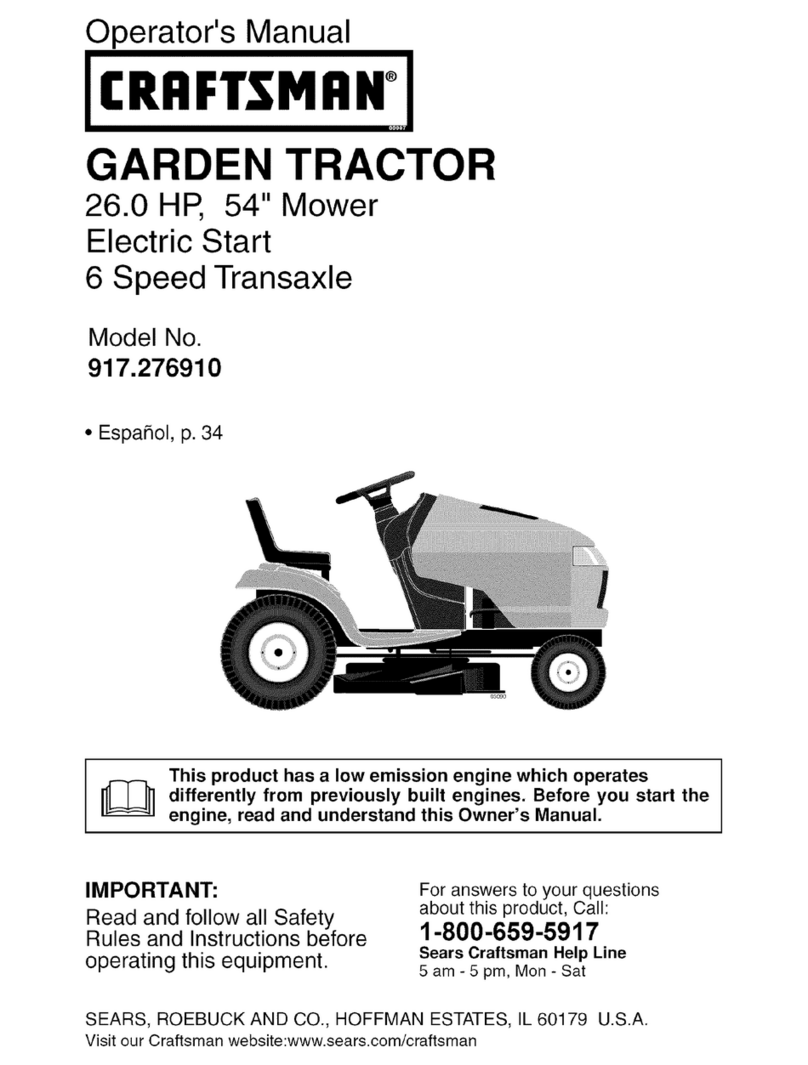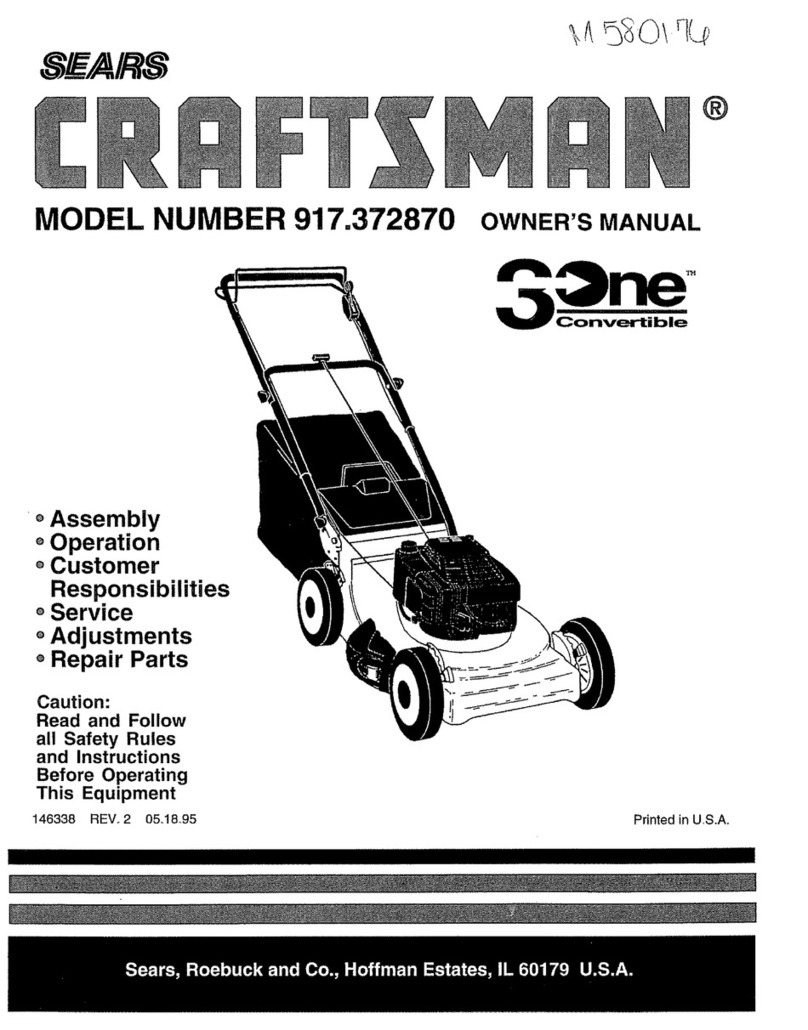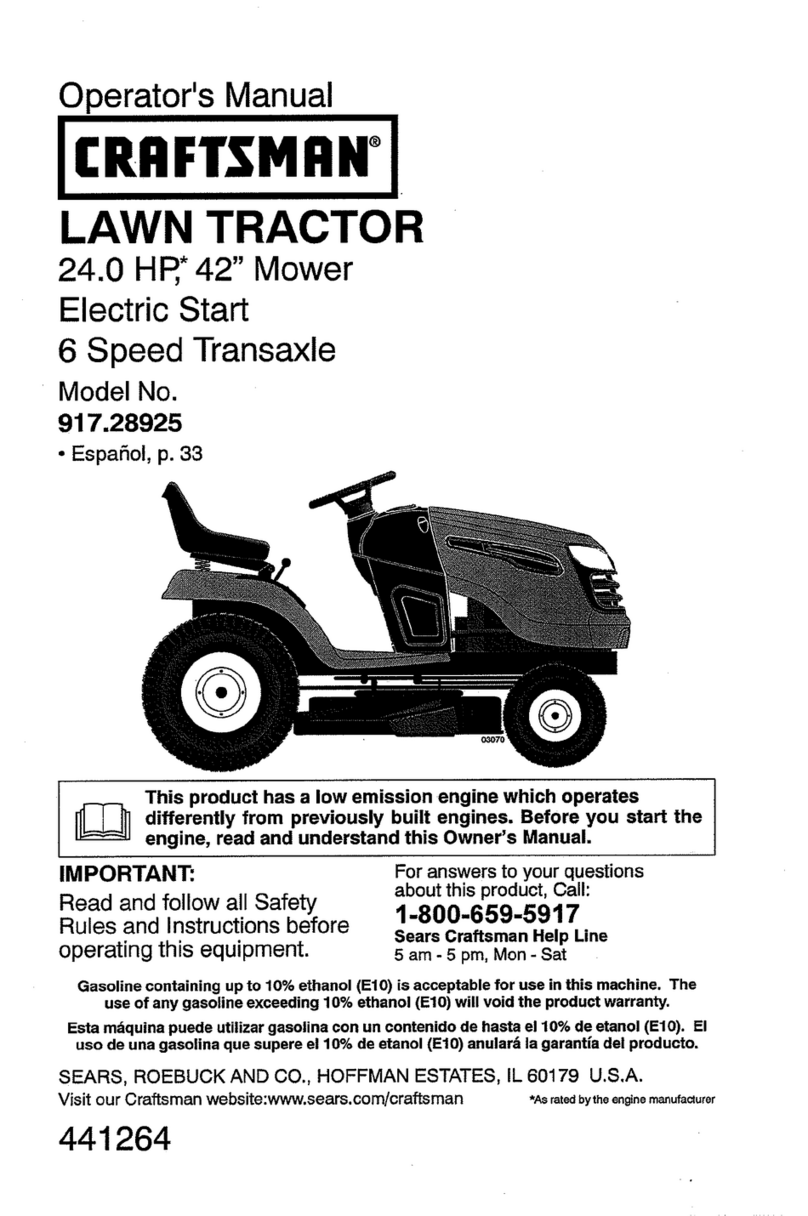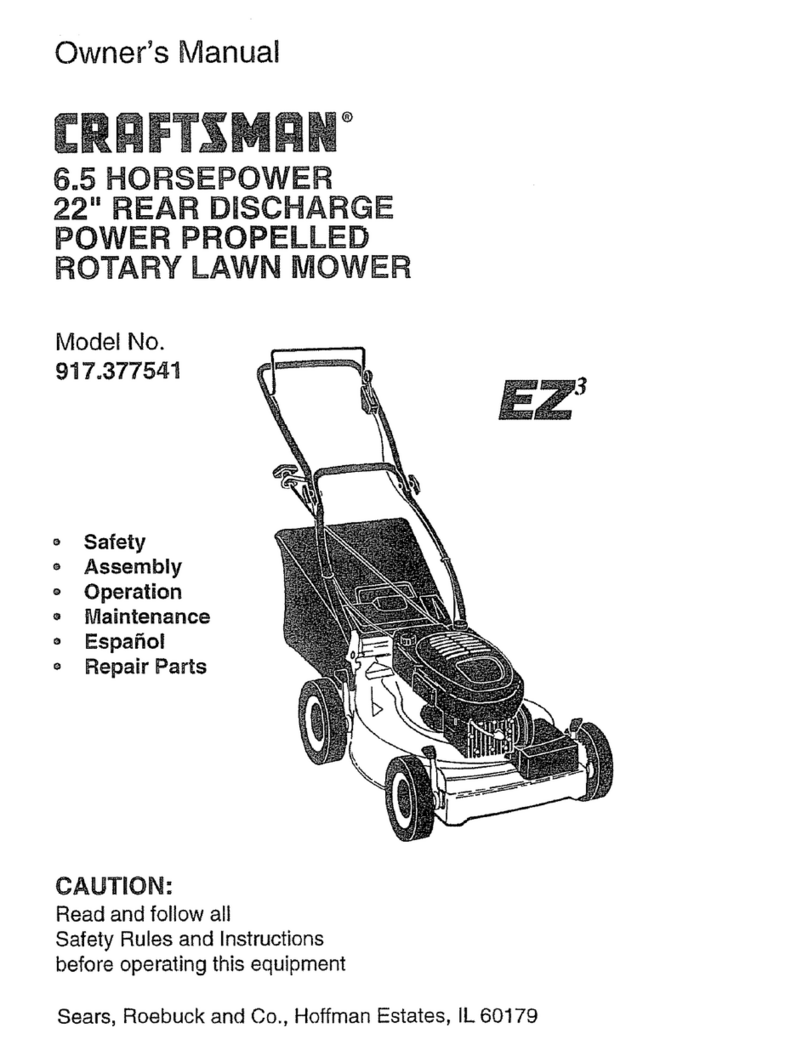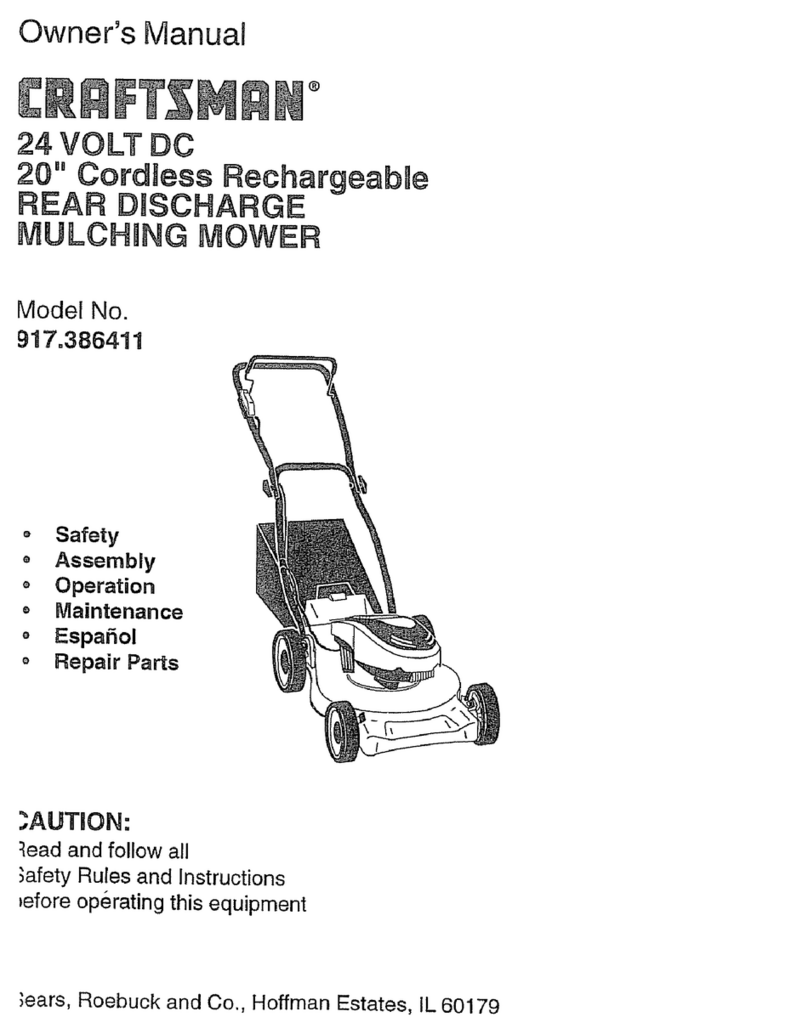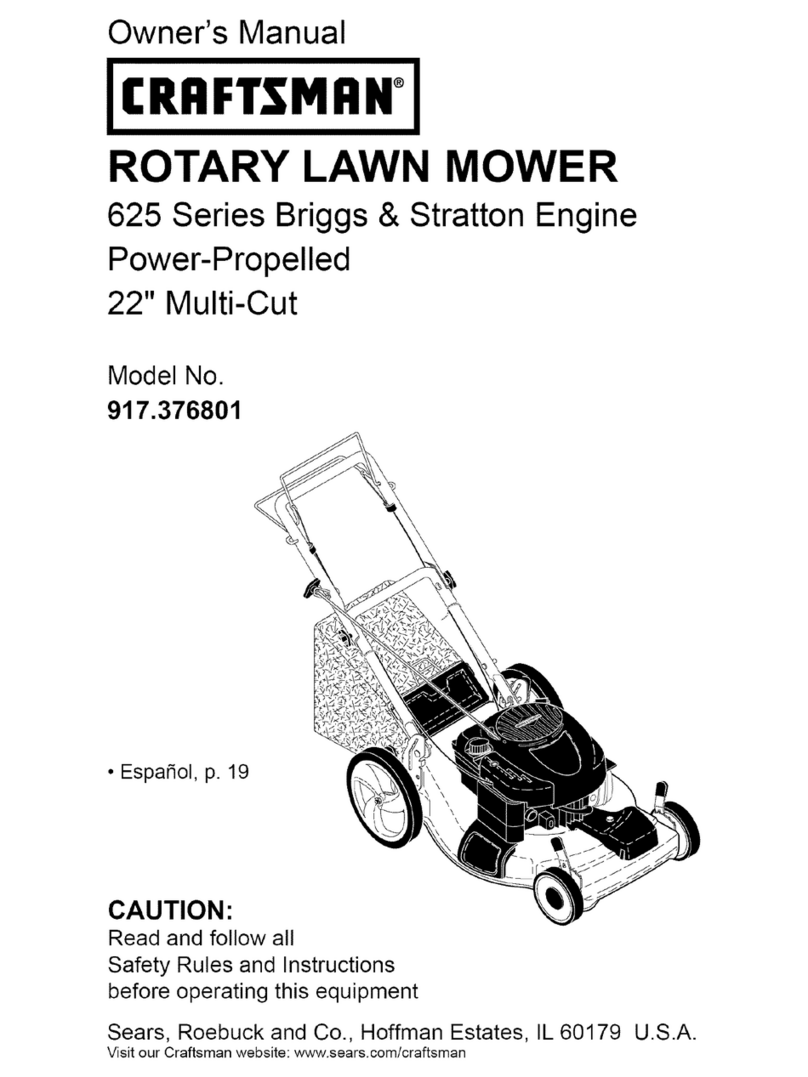PRODUCT SPECIFICATIONS
Gasoline Capacity 2.5 Gallons!9,48 L
and type: Regular Unleaded
oil Type: SAE30(above 32 °F/0°C
(API: SG-SL) SAE 5W30 (below 32_F/0°C
Oil Capacity: W/Filter: 56 Oz./1,65 L
W/out Filter: 48 Oz..i1,4 L
Spark Plug: Champion RC12YC
(Gap: .030"/0.76 mm)
Charging 3 Amps Battery
System: 5 Amps Headlights
Battery: Amp/Hr: 28
Min. CCA; 230
Case size: U1 R
Blade Bolt Torque: 45-55 Ft. Lbs.i62-75 Nm
CONGRATULATIONS onyour purchaseof
a new tractor. It has been designed, engi-
neeredand manufacturedtogiveyouthe best
possible dependability and performance.
Should you experience any problem youcan-
not easily remedy, please contact aSears or
other qualified service center, We have com-
petent, well-trained representatives andthe
proper tools to service or repair this tractor.
Please read and retain this manual. The
instructions will enable you to assemble
and maintain your tractor properly. Always
observe the "SAFETY RULES".
CUSTOMER RESPONSIBILITIES
- Read and observe the safety rules.
- Follow a regular schedule in maintaining,
caring for and using your tractor.
*Follow instructions under "Maintenance"
land "Storage" sections of this manual.
-Wear proper Personal Protective Equip-
ment (PPE)while operatingthis machine,
including(at aminimum) sturdy footwear,
eye protection, and hearing protection.
Do not mow in shorts and/or open toed
footwear.
oAlways Ietsomeone knowyou areoutside
mowing.
_t, WARNING; This tractor isequipped with
an internal combustion engine and should
not be used on or near any unimproved
forest-covered, brush-covered or grass-
covered land unless the engine's exhaust
system is equipped with a spark arrester
meeting applicable local or state laws (if
any). if a spark arrester is used, it should
be maintained in effective working order by
the operator.
6
Inthestate ofCalifornia the aboveisrequired
bylaw (Section 4442 ofthe California Public
Resources Code). Other states may have
similar laws, Federal laws apply on federal
lands, A spark arrester for the muffler is
availablethrough yournearestSearsservice
center (See REPAIR PARTS manual),
REPAIR PROTECTION AGREEMENTS
Congratulations on making a smart pur-
chase, Your new Craftsman® product is
designed and manufactured for years of
dependable operation. But like all products,
itmay require repairfrom timeto time.That's
when having a RepairProtection Agreement
can save you money and aggravation,
Purchase a Repair Protection Agreement
now and protect youroeff from unexpected
hassle and expense.
Here's what'sincludedin the Agreement:
•Expert servicebyour 12,000 professional
repair specialists.
• Unlimited service and nochargefor parts
and labor on all covered repairs.
• Product replacement if your covered
productcan't be fixed.
• Discount of 10% from regular price of
service and service-related parts not
covered bythe agreement; also, 10%off
regular price of preventive maintenance
check.
- Fast help by phone -phone support
from aSears representative on products
requiring in-home repair,plusconvenient
repair scheduling,
Once you purchase theAgreement, asimple
phone call isall that ittakes for youto sched-
uleservice. Youcancall anytime dayor night,
or schedule a service appointment online.
Sears has over 12,000 professional repair
specialists, who have access to over 4.5
million quality parts and accessories. That's
the kind ofprofessionalism you can counton
to help prolong the life of your newpurchase
for years to come. Purchase your Repair
Protection Agreement today!
Some limitations and exclusions apply.
For pricesand addiUonal information call
1-800-827-6655,
SEARS INSTALLATION SERVICE
For Sears professional installation of home
appliances, garage door openers, water
heaters, and other major home items,inthe
U.S.A. call 1-800-4-MY-HOME®
